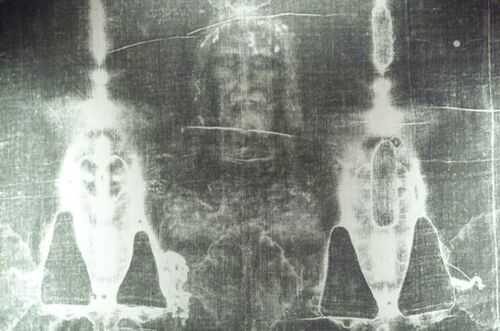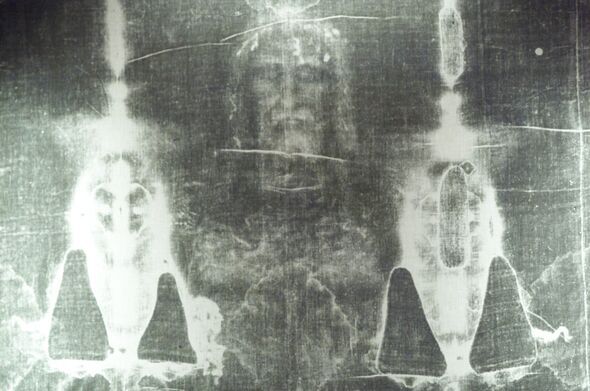

For over 600 years, debate has raged about the authenticity of the Shroud of Turin - a 14ft long linen cloth that appears to bear the imprint of man's near-naked body.
Believers claim that the image was somehow scorched onto the fabric after it was wrapped around the body of Jesus Christ, after his crucifixion. They claim it is evidence that not only Jesus existed, but that he was resurrected after his death.
At the beginning of the age of photography, it emerged that the faint image was greatly enhanced when viewed as a photographic negative, strengthening beliefs that the image had been "burned into" the cloth using some supernatural process.
But sceptics have always cast doubt on these claims, and it has now emerged that the shroud had been denounced as a fake almost as soon as it first appeared in Europe.
The earliest records of the shroud suggest that it had come into the possession of a French nobleman named Geoffroy de Charny during a crusader campaign in the 1340s.

Geoffroy took the cloth with him back to his home in the small town of Lirey and it was known to be in his possession in the 1350s.
But now a study, published in the Journal of Medieval History, has revealed that questions were being asked about the alleged "holy relic" from the outset.
A letter written in 1355 by respected Norman theologian Nicole Oresme dismissed the shroud as a "clear" and "patent" fake. Before the emergence of this new evidence, a 1389 letter by Pierre d'Arcis, the Bishop of Troyes, had been thought to be the first sceptical assessment of the object.

Dr. Nicolas Sarzeaud, a researcher in history at the Université Catholique of Louvain, in Belgium, and a fellow of the Villa Médicis, the French Academy, in Rome, Italy, is the lead author of the new study, which was published this week.
"This now-controversial relic has been caught up in a polemic between supporters and detractors of its cult for centuries," he writes. "What has been uncovered is a significant dismissal of the Shroud."
Oresme, who later became the Bishop of Lisieux, was an influential figure at the time. He was known for rationalising and debunking various claims of "miracles" and other supernatural phenomena.

In his 1355 letter, Oresme writes: "I do not need to believe anyone who claims 'Someone performed such a miracle for me,' because many clergymen thus deceive others, in order to elicit offerings for their churches.
"This is clearly the case for a church in Champagne, where it was said that there was the shroud of the Lord Jesus Christ, and for the almost infinite number of those who have forged such things, and others."
Dr. Sarzeaud says: "What has been uncovered is a significant dismissal of the Shroud." He says that the cleric had singled out the claims about the Shroud's origins as a particularly flagrant example of fraud perpetrated to extract money from pilgrims.
"Oresme's assessment of the Shroud, too, actually prompted him to be more broadly suspicious of the word of clergy altogether," he added.

The Shroud was on display in Lirey until around 1355 when the Bishop of Troyes ordered its removal. It was then hidden away for over 30 years until Pope Clement VII granted permission for it to be exhibited again - with careful conditions about the claims made for its origins.
Professor Andrea Nicolotti, one of the most respected authorities on the controversial relic, commented that Dr. Sarzeaud's findings, are "further historical evidence that even in the Middle Ages, they knew that the Shroud was not authentic".
He added: "The other technological and scientific evidence, which points in the same direction, remains unchanged."